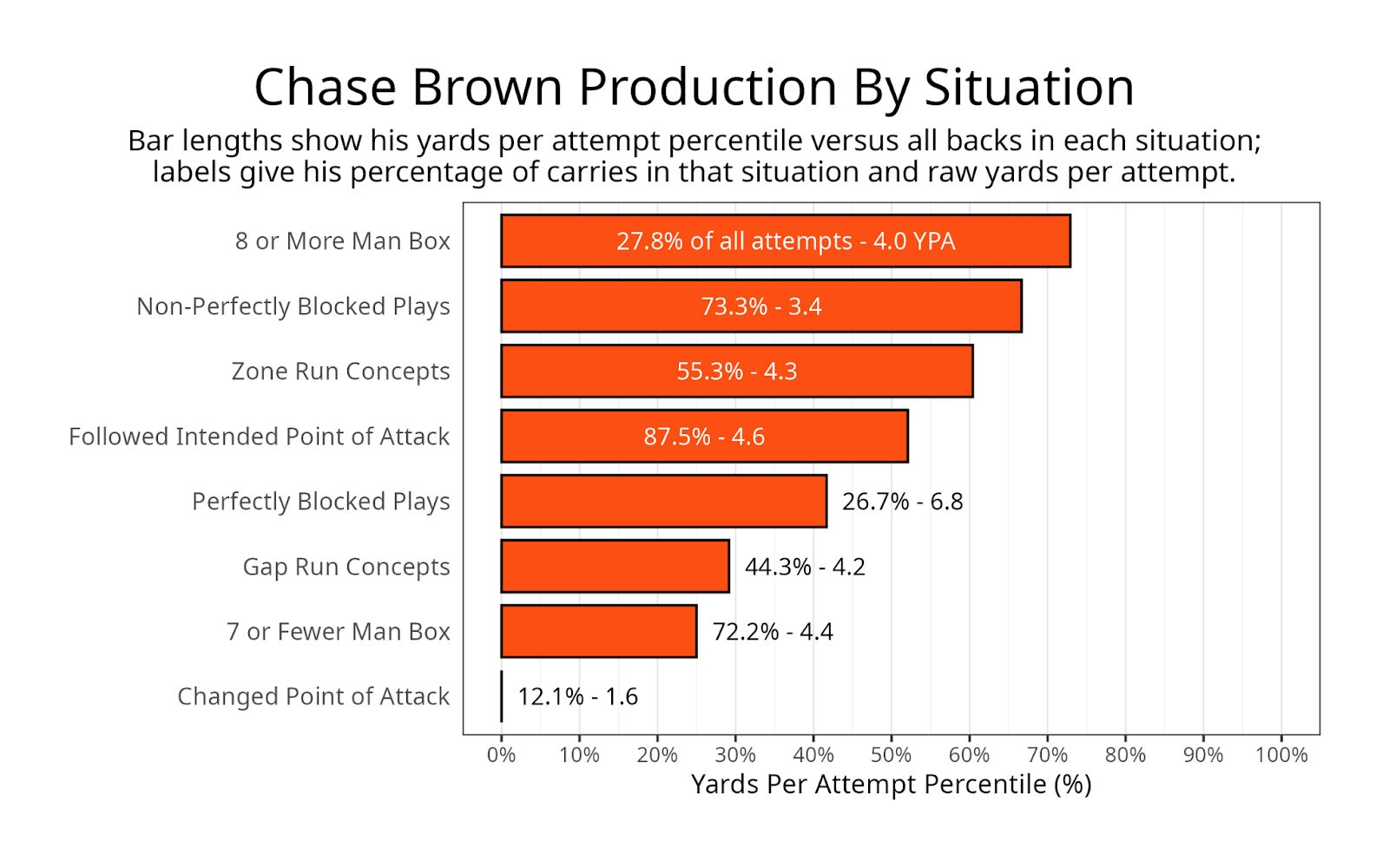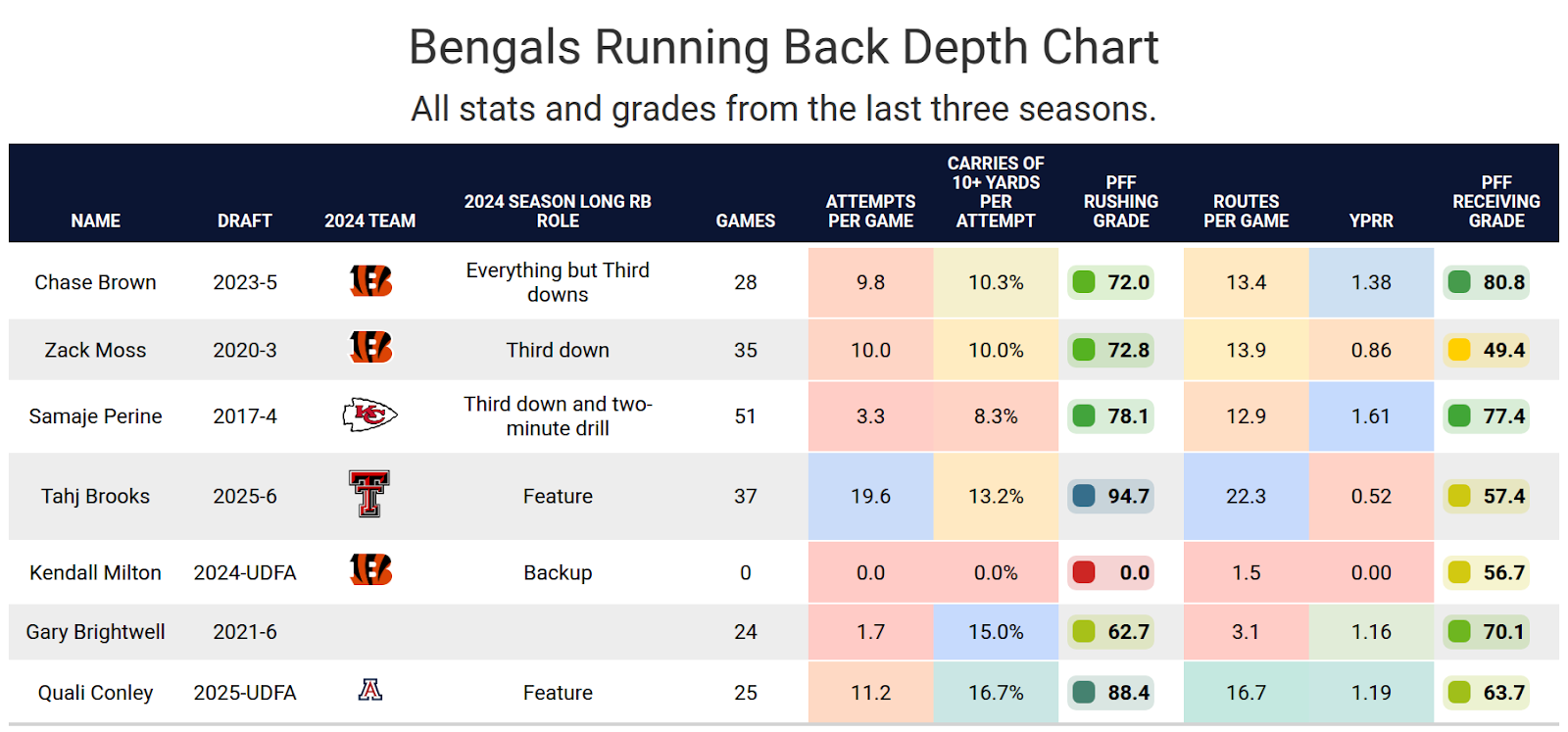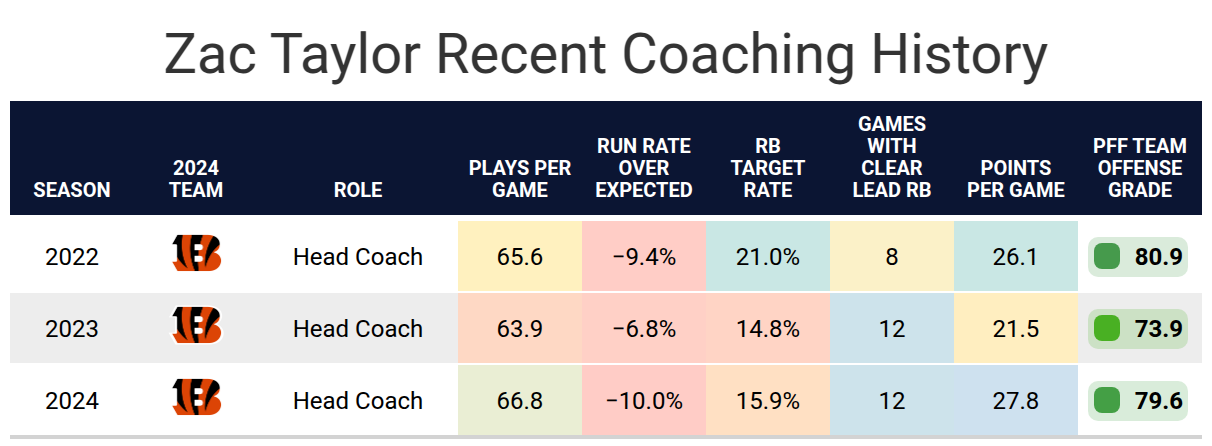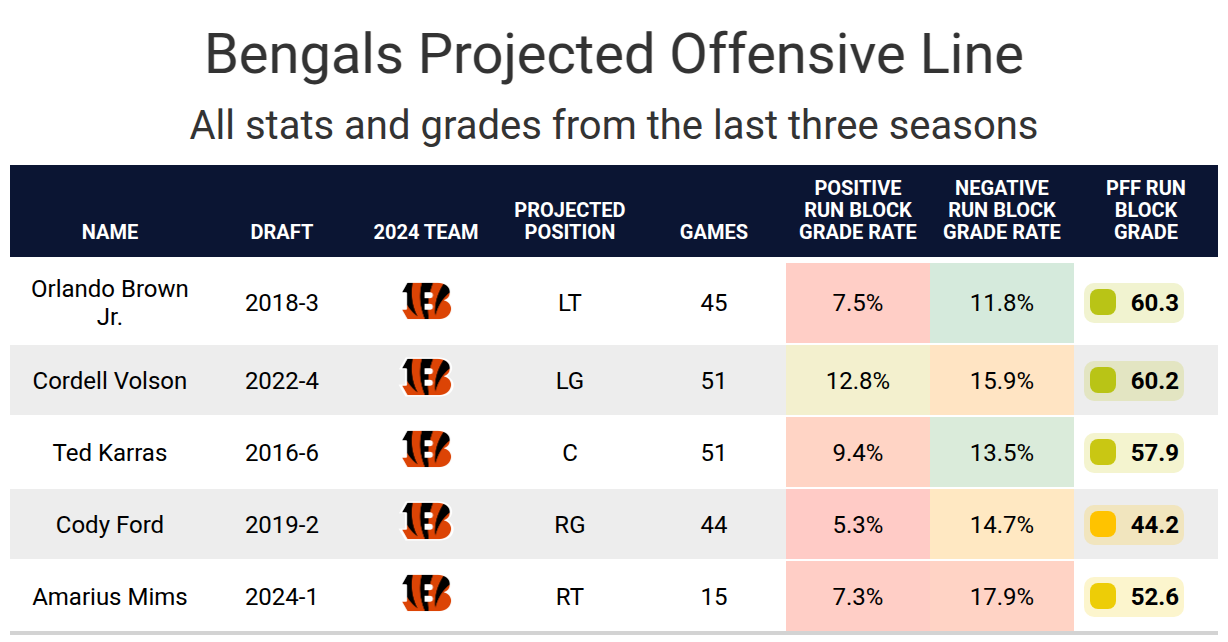Fantasy Football 2025: RB Chase Brown player profile

2S15MEG Cincinnati Bengals running back Chase Brown, center, celebrates after a first-down run during the second half of an NFL football game against the Denver Broncos, Saturday, Dec. 28, 2024, in Cincinnati. (AP Photo/Kareem Elgazzar)
By
- Chase Brown was a league-winner: Brown wasn’t drafted to be a fantasy starter, but scored the third-most fantasy points per game over an eight-game stretch at the end of the season.
- Can he maintain the starting job?: Brown’s success had a lot to do with his playing time and situation in the Bengals’ high-scoring offense. There is a chance someone else could emerge as the primary lead back at some point this season.
- Subscribe to PFF+: Get access to player grades, PFF Premium Stats, fantasy football rankings, all of the PFF fantasy draft research tools and more!
Estimated Reading Time: 5 minutes

PFF’s Fantasy Football Player Profile series delivers the most in-depth fantasy football analysis available for the 2025 season.
Using PFF’s exclusive data, we evaluate player performance, competition for touches and how teammates and coaching staffs will impact each player’s fantasy football outlook.
Last updated: 7:15 a.m. Saturday, May 17
Player performance
Brown was a fifth-round pick by the Bengals in 2023, when Joe Mixon was the starter. Brown was a non-factor over the first 12 weeks of his rookie season, finishing with two carries and three receptions on eight snaps. In Week 13, Brown started cutting into Mixon’s playing time. He played 11-18 snaps over the final six weeks of the season and averaged seven carries per game for 29 yards and 2.2 receptions for 29.8 yards.
The Bengals elected to move on from Mixon and added free agent Zack Moss, who started to begin the season but by Week 4, Brown was receiving double-digit carries each week. In Week 8, Moss suffered a season-ending injury. Brown took the lead in Week 8, and from Weeks 9 to 17, he played at least 80% of Cincinnati’s offensive snaps every week. He averaged 20.6 fantasy points per game during that stretch, third-most among running backs.
Brown earned a 73.8 rushing grade, which was tied for Mixon’s lowest rushing grade with the Bengals, outside of his 2020 season, when he only played six games. However, Brown’s fantasy production was better during that eight-game stretch because the Bengals scored 24-41 points each week, leading to a lot of offensive plays and touchdowns. Brown was also involved as a receiver despite not playing often on third downs. His numbers were remarkably similar to Mixon’s last season.



Projected role
Once Brown became the starter and Moss was out, he was playing every situation outside of third downs. Instead of having a third-down back, Cincinnati simply used three wide receivers and two tight ends, or four wide receivers and one tight on on third downs, and one of those tight ends, Drew Sample, helped with blocking.
The backfield situation became notably more complicated this season. Samaje Perine returned to the team after playing for Cincinnati in 2020-2022. He was both a third-down back and a two-minute drill back for Cincinnati. In 2022, he played 58 two-minute drill snaps to Joe Mixon‘s 32, so we could see his two-minute drill snaps get cut in half. Luckily, the Bengals have never been a team to throw to running backs during two-minute drills that often, and Brown only caught four of his passes last season during two-minute drills.
Moss restructured his deal in April to return to Cincinnati, making it likely he will make the roster. He was dealing with a neck injury, so it’s unclear if he will be ready for the start of the season. However, he started last season and has generally graded a little better as a runner. The Bengals drafted Tahj Brooks in the sixth round, and he is very similar to Brown.
The Bengals tend to have one clear running back for early downs. Since 2017, the Bengals have had one running back with 170 or more carries in first or second down, outside of two-minute drills. The most a backup has had is 83 runs. The exception was 2020, when Mixon was the clear leader before injury. This means Brown should still be the clear lead early back, unless he loses the job, in which case he loses all of his fantasy value.


Impact of teammates
Brown will continue having Zac Taylor as his head coach. The Bengals running back has constantly had fantasy value in his offenses, even if they haven’t graded well, because he’s constantly had a lead runner. The offense scores a lot of points, which allows the running backs to score a lot of touchdowns. There are fewer carries to go around because of how much they pass the ball, so this is not an offense that can have two fantasy-relevant running backs at the same time, but as long as Brown is the guy, he should keep having value. While the Bengals are passing so much, defenses aren’t as focused on the run, which has also been an asset to the Bengals’ running backs.
The Bengals’ offensive line ranked fourth-worst in run blocking last season. Trent Brown was the highest-graded run blocker during his three games, but he is no longer on the roster. There isn’t much reason for optimism this season, outside of the continuity on the line, aas linemen who play together in the same system over time tend to play better, but they will still likely stay below average. All running backs play better when the line plays better, but Brown and Moss have handled bad offensive line play better than the average running back, which is likely part of the reason the Bengals added them.


Bottom line
Brown was the third-best fantasy running back over an eight-game stretch last season, but the Bengals offense is bound to have a little regression. The real problem will be increased competition for touches. As long as Brown is starting, he should be a safe start in fantasy, but there is no guarantee he remains the starter all season, even if he stays healthy.

Footnotes
- Statistics in tables and charts were chosen based on their ability to predict future fantasy performance on a per-game or per-opportunity basis or to describe the player relative to others at the same position.
- “Opportunities” are defined as passing dropbacks, rushing attempts and routes run as a receiver.
- Numbers are provided either by season or based on the past three years. For rookies, only college statistics are included. For non-rookies, only NFL statistics are considered, regardless of whether they played in college within the previous three years.
- As college competition is easier than NFL competition, most rookies are likely to see a decline from their historical numbers.
- Only FBS data is considered for college players and comparisons.
- Kneel-downs are removed from rushing data to provide cleaner quarterback rushing rate statistics.
- The table colors in this article range from blue (indicating good/high) to red (indicating bad/low).
- All percentiles and color codings compare the given player to others with a high sample of opportunities. Generally, the cutoff is one-third of the possible opportunities in the sample. If a player does not meet the threshold, they are still included in the comparison, though their results may appear better or worse than expected due to the smaller, less predictive sample size.
- Information on utilization classifications and their importance can be found here for running backs, wide receivers and tight ends.




